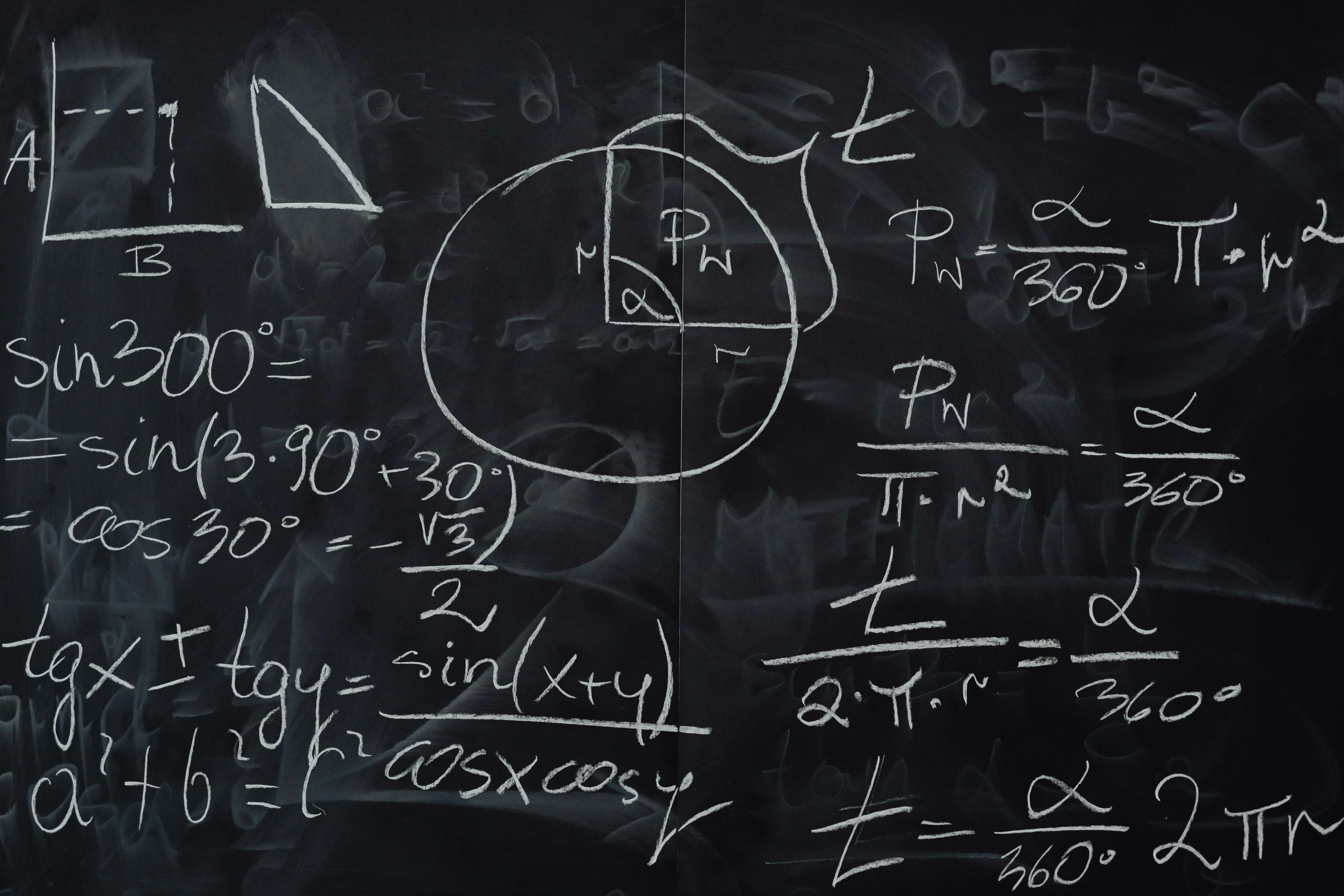Matrix multiplication: Let’s make it less expensive!
Have you ever wondered why your code takes forever to run? Sometimes a simple code may take significant time because of an inefficient implementation approach. Let’s take a simple example of matrix multiplication, and explore the time and space complexity, specifically focusing on multiplying matrices where one of the matrices is formed as an outer product of a vector with itself.

Matrix multiplication is a fundamental operation in many areas such as computer graphics, machine learning, and scientific computing. Given two matrices \(\mathbf{A}\) and \(\mathbf{B}\), the product \(\mathbf{AB}\) or \(\mathbf{BA}\) is a new matrix where each element is computed as the dot product of the corresponding row of \(\mathbf{A}\) and the column of \(\mathbf{B}\) or the other way around.
Consider the scenario where \(\mathbf{A}\) is an outer product of a column vector \(\mathbf{a}\) with itself, i.e.,
\[\begin{align*} \mathbf{A}=\mathbf{a} \mathbf{a}^T&=\begin{pmatrix}a_1\\a_2\\\vdots \\a_n\end{pmatrix}\begin{pmatrix}a_1&a_2&\cdots &a_n\end{pmatrix}\\ &=\begin{pmatrix} a_1a_1 & a_1a_2& \cdots &a_1a_n\\ a_2a_1& a_2a_2&\cdots &a_2a_n\\ \vdots & \vdots & \ddots & \vdots \\ a_na_1 & a_na_2 &\cdots& a_na_n\end{pmatrix}\\ \end{align*} \]
Now simply, if \(\mathbf{B}\) is another \(n\times n\) matrix, then
\[ \begin{align*} \mathbf{BA}&=\begin{pmatrix} b_{11} & b_{12} & \cdots & b_{1n}\\ b_{21} & b_{22} & \cdots & b_{2n}\\ \vdots & \vdots & \ddots & \vdots \\ b_{n1} & b_{n2} & \cdots & b_{nn}\\ \end{pmatrix}\begin{pmatrix} a_1a_1 & a_1a_2& \cdots &a_1a_n\\ a_2a_1& a_2a_2&\cdots &a_2a_n\\ \vdots & \vdots & \ddots & \vdots \\ a_na_1 & a_na_2 &\cdots& a_na_n\end{pmatrix} \end{align*} \]
Let’s analyze the complexity of this matrix matrix multiplication.
Worst Case: The worst case scenario would be performing the multiplication naively without exploiting the rank-1 structure. How? When we compute any element in the resultant matrix \(\mathbf{BA}\) or \(\mathbf{AB}\) we precisely perform \(n\) multiplication and there are total \(n^2\) elements to compute for a matrix of \(n\times n\). This would result in the standard matrix multiplication time complexity of \(O(n^3)\).
\[ \begin{align*} \mathbf{BA}&=\begin{pmatrix} b_{11}a_1a_1+\cdots+b_{1n}a_na_1& b_{11}a_1a_2+\cdots+b_{1n}a_na_2 &\cdots & b_{11}a_1a_n+\cdots+b_{1n}a_na_n\\ b_{21}a_1a_1+\cdots+b_{2n}a_na_1&b_{21}a_1a_2+\cdots+b_{2n}a_na_2 &\cdots & b_{21}a_1a_n+\cdots+b_{2n}a_na_n\\ \vdots & \vdots &\ddots & \vdots\\ b_{n1}a_1a_1+\cdots+b_{nn}a_na_1&b_{n1}a_1a_2+\cdots+b_{nn}a_na_2 &\cdots & b_{n1}a_1a_n+\cdots+b_{nn}a_na_n\end{pmatrix} \end{align*} \]
Best Case: The best case scenario in terms of time complexity occurs when we exploit the structure of \(\mathbf{A}\). Since \(\mathbf{A}\) is a rank-1 matrix, we can simplify the multiplication: \[ \begin{align*} \mathbf{BA}&=\mathbf{B}\begin{pmatrix} a_1a_1 & a_1a_2& \cdots &a_1a_n\\ a_2a_1& a_2a_2&\cdots &a_2a_n\\ \vdots & \vdots & \ddots & \vdots \\ a_na_1 & a_na_2 &\cdots& a_na_n\end{pmatrix}\\ &\\ &=\mathbf{B}\begin{pmatrix}a_1 \mathbf{a} & a_2 \mathbf{a} &\cdots a_n \mathbf{a}\end{pmatrix}\\ &=\begin{pmatrix}a_1 \mathbf{B}\mathbf{a} & a_2 \mathbf{B}\mathbf{a} &\cdots a_n \mathbf{B}\mathbf{a}\end{pmatrix}\\ &= (\mathbf{Ba}) a^T \end{align*} \]
We break this algorithm in to two steps.
Step 1: Since \(\mathbf{B}\) is a matrix of \(n\times n\) and \(\mathbf{a}\) is a matrix of \(n\times 1\), therefore \(\mathbf{Ba}\) is a matrix of size \(n\times 1\) or just a vector of size \(n\).
\[ \begin{align*} \mathbf{Ba}&=\begin{pmatrix} b_{11} & b_{12} & \cdots & b_{1n}\\ b_{21} & b_{22} & \cdots & b_{2n}\\ \vdots & \vdots & \ddots & \vdots \\ b_{n1} & b_{n2} & \cdots & b_{nn}\\ \end{pmatrix}\begin{pmatrix}a_1\\a_2\\ \vdots \\a_n \end{pmatrix}\\ &\\ &=\begin{pmatrix} b_{11}a_1+b_{12}a_2+\cdots b_{1n}a_n\\ b_{21}a_1+b_{22}a_2+\cdots b_{2n}a_n\\ \vdots\\ b_{n1}a_1+b_{n2}a_2+\cdots b_{nn}a_n\\ \end{pmatrix} \end{align*} \] The matrix \(\mathbf{Ba}\) contains \(n\) elements where each element takes \(n\) multiplications. Thus, computing \(\mathbf{Ba}\) takes \(O(n^2)\) time.
Step 2: Next, we compute \((\mathbf{Ba})\mathbf{a}^T\).
\[
\begin{align*}
(\mathbf{Ba})\mathbf{a}^T&=\begin{pmatrix}ba_1\\ ba_2\\ \vdots\\ ba_n \end{pmatrix}
\begin{pmatrix}a_{1}& a_{2}& \cdots a_{n} \end{pmatrix}\\
&\\
&=\begin{pmatrix}
(ba_1)a_1 & (ba_1)a_2 &\cdots &(ba_1)a_n\\
(ba_2)a_1 & (ba_2)a_2 &\cdots &(ba_2)a_n\\
\vdots & \vdots & \ddots & \vdots \\
(ba_n)a_1 & (ba_n)a_2 &\cdots &(ba_n)a_n\\
\end{pmatrix}
\end{align*}
\] Forming the outer product of \(\mathbf{Ba}\) and \(\mathbf{a}^T\) also takes \(O(n^2)\) time. Thus, the best case time complexity is \(O(n^2)\).
Well, how about the other way around? What’s the optimal strategy for \(\mathbf{AB}\)? We can reach similar results in the following way \[ \begin{align*} \mathbf{AB}&=(\mathbf{a} \mathbf{a}^T) \mathbf{B} = \mathbf{a} (\mathbf{a}^T \mathbf{B}) \end{align*} \]
Here, \(\mathbf{a}^T \mathbf{B}\) is a row vector of size \(n\). Computing \(\mathbf{a}^T \mathbf{B}\) takes \(O(n^2)\) time. Then, multiplying the column vector \(\mathbf{a}\) by the resulting row vector forms an \(n \times n\) matrix, also in \(O(n^2)\) time. Thus, the best case time complexity is \(O(n^2)\). Note, that \(\mathbf{AB}\ne \mathbf{BA}\).
Comparison: So, what’s the big difference? There is a significant difference in two algorithms. In the first algorithm the time complexity is \(O(n^3)\) where as in the second algorithm the time complexity is \(O(n^2)+O(n^2)\) or \(2O(n^2)\) or just \(C\hspace{1mm} O(n^2)\). For example, if \(n=500\) then the first algorithm requires 125 million multiplications and the second one just takes 500,000 multiplications which is 250 times faster.
Understanding the structure of the matrices involved in multiplication can significantly optimize the performance of our code. By exploiting the rank-1 structure of the outer product matrix \(\mathbf{a} = \mathbf{a} \mathbf{a}^T\), we can reduce the time complexity from \(O(n^3)\) to \(O(n^2)\) in the best case scenario. This optimization can lead to considerable performance improvements, especially for large matrices.
Space Complexity: Regardless of the case, the space complexity remains \(O(n^2)\) since we need to store the resulting \(n \times n\) matrix \(\mathbf{BA}\).
Python Code:
import numpy as np
import time
# Function to perform naive matrix multiplication
def naive_multiplication(B, a):
n = len(a)
A = np.outer(a, a)
result = np.zeros((n, n))
for i in range(n):
for j in range(n):
result[i, j] = sum(B[i, k] * A[k, j] for k in range(n))
return result
# Function to perform optimized matrix multiplication (exploiting rank-1 structure)
def optimized_multiplication(B, a):
Ba = np.dot(B, a)
result = np.outer(Ba, a)
return result
# Generate random vector a and matrix B
n = 500 # Size of the matrix and vector
a = np.random.rand(n)
B = np.random.rand(n, n)
# Measure time for naive multiplication
start_time = time.time()
naive_result = naive_multiplication(B, a)
naive_duration = time.time() - start_time
# Measure time for optimized multiplication
start_time = time.time()
optimized_result = optimized_multiplication(B, a)
optimized_duration = time.time() - start_time
print(f"Naive Multiplication Time: {naive_duration:.6f} seconds")
print(f"Optimized Multiplication Time: {optimized_duration:.6f} seconds")Output
Naive Multiplication Time: 27.198208 seconds
Optimized Multiplication Time: 0.001841 secondsWhat about when \(\mathbf{A}\) is not given as \(\mathbf{A}=\mathbf{aa}^T\) (i.e., it’s not a rank-1 matrix)? We simply cannot exploit the same optimization based on the outer product. In this case, we have to use the general matrix multiplication approach, which typically has a time complexity of \(O(n^3)\) for naive multiplication. However, there are optimized algorithms that can reduce the time complexity:
- Strassen’s Algorithm: Reduces the time complexity to approximately \(O(n^{2.81})\)
- Coppersmith-Winograd Algorithm: Further reduces the time complexity to approximately \(O(n^{2.376})\)
- Parallel Algorithms: Use parallel computing techniques to perform matrix multiplication more efficiently.
May be some other day we can talk about these algorithms.
Share on
You may also like
Citation
@online{islam2024,
author = {Islam, Rafiq},
title = {Matrix Multiplication: {Let’s} Make It Less Expensive!},
date = {2024-07-01},
url = {https://mrislambd.github.io/posts/matmul/},
langid = {en}
}


